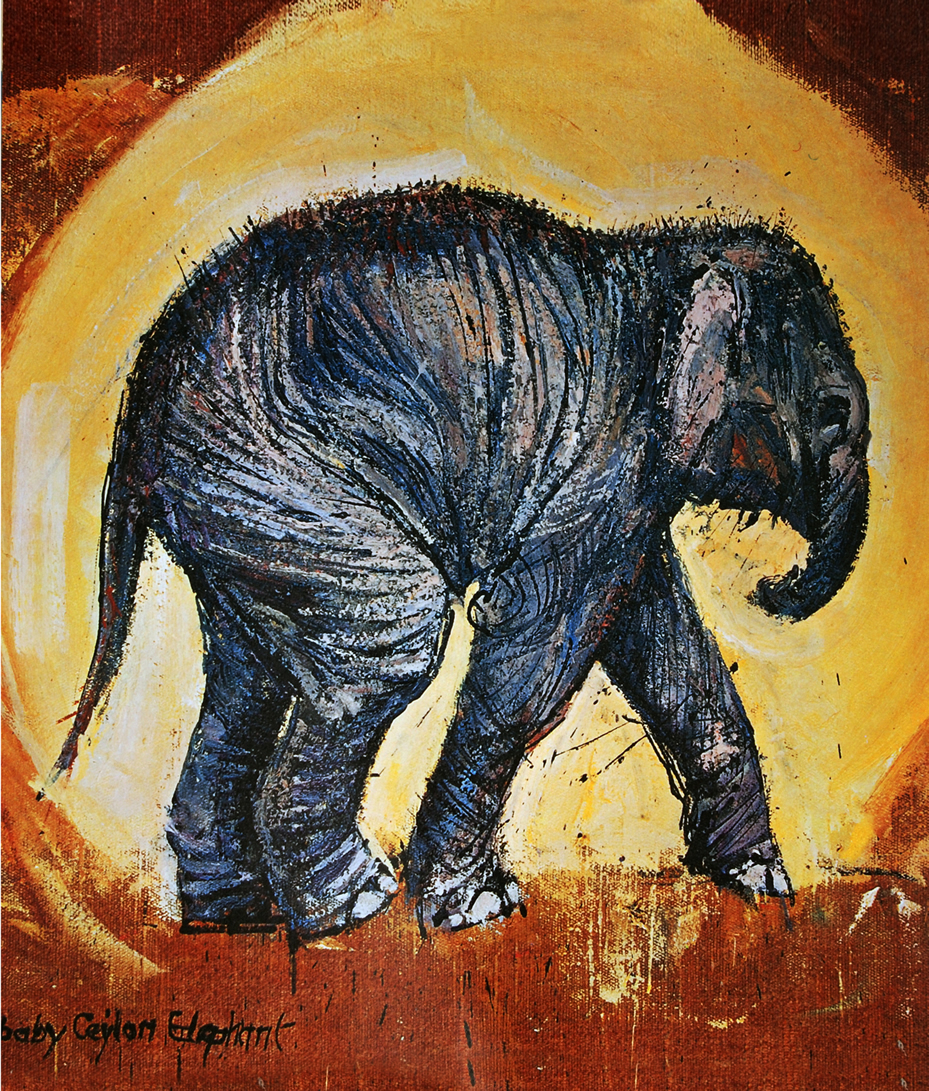
Fritz Rudolf Hug (1921 - 1989) was a Swiss painter. Born in Dornach, Hug spent his childhood in Java, where his father worked as a railway engineer. After returning to Switzerland, he attended the School of Applied Arts in Zurich in 1935. After an apprenticeship at the Zurich University Publishing House, he began to devote himself seriously to painting and at the age of twenty, he had his first solo exhibition. He travelled extensively in Europe and Africa and for a time, worked with Dr. Albert Schweitzer at the Lambarene Hospital in Gabon.
In addition to oil paintings, Hug created lithographs, posters, mosaics and murals. Together with his wife Margrit, Hug also created three picture books about biblical themes, which were translated into several languages. By the 1960's however, Hug had become known as a painter of animals. In 1967, the World Wildlife Fund requested Hug to paint one hundred animals threatened with extinction. It was a job which required both artistic skill and zoological knowledge. He moved to a little village near Zurich and spent time at the zoo studying various animals. His paintings which were exhibited in Zurich in 1970 were anatomically accurate but had a sense of caricature which brought out the essence of each animal. From 1967 until his death in 1989, Hug continued to produce much loved paintings of animals for the World Wildlife Fund. Hug never visited Ceylon but drew the painting of a baby elephant based on animals from the Zurich Zoo.